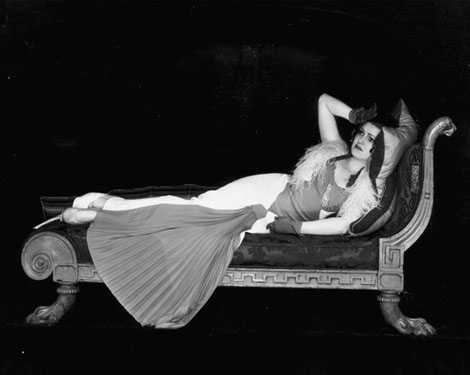Think of sofa styles, and Chesterfields, love seats, sectionals, or settees might come to mind. But there's one particular type that's just as worthy of recognition—the fainting couch. To put it simply, a fainting couch is essentially a form of daybed with a curvy wood frame and back that is raised at one end.

History
Many have speculated about the origin of the term fainting couch. One myth is that this form of seating design gained popularity during the Victorian era. During this time, Victorian women, who often fainted from wearing tight corsets, would rely on this particular style of sofa to recover. The sofas were staples in what were supposedly called fainting rooms at the time.
But interior designer Danielle Rollins has another theory. "During the Victorian era, once the housekeepers had made the bed, that was it and the lady of the room was not to get back in it until the bed had been turned down for her," she says. "It served as a respite for napping or reading."
Later on in the 19th century, Turkish fainting couches became more common, as coil-spring technology allowed for more comfortable designs. The Turkish fainting couch was inspired by Middle Eastern seating, which boasted everything from tufted details to eye-catching skirts.
Another theory regarding the origin of the fainting couch is connected to Freud, the founder of psychoanalysis. When Freud's therapy sessions would carry on for hours on end, he'd invite patients to relax on a fainting couch. It was his way of making them feel more at ease with sharing about their personal issues.
Decor
Out of the variety of sofa styles now on the market, the fainting couch is surprisingly versatile. It can easily steal the show in an understated room. On the other hand, its striking silhouette makes it just as suitable for a more opulent space. When it comes to design enthusiasts, an antique lover is most likely to appreciate the elegant, old-world feel of a fainting couch. Many designers use the charming daybed style for a variety of rooms, although the foot of a bed or in front of a window is ideal.
Designer Suzanne Ascher of Waterleaf Interiors especially loves it for a master bedroom. "The fainting couch has such an elegant shape," says Rollins. "I would use it in a large master bedroom to add seating so you're not always in or on your bed when you're reading, talking, and watching TV. It also gives your children and your pet a special spot." Decorator Danielle Rollins agrees. "It's a place to sit besides being on a bed," she says. "It's perfect for reading a book, answering emails, or even just putting on a pair of heels and a swipe of lipstick before dashing off. They’re open, airy, light, and without definitive sides, so they fit in spaces that a sofa might be too heavy for."



















Your Message